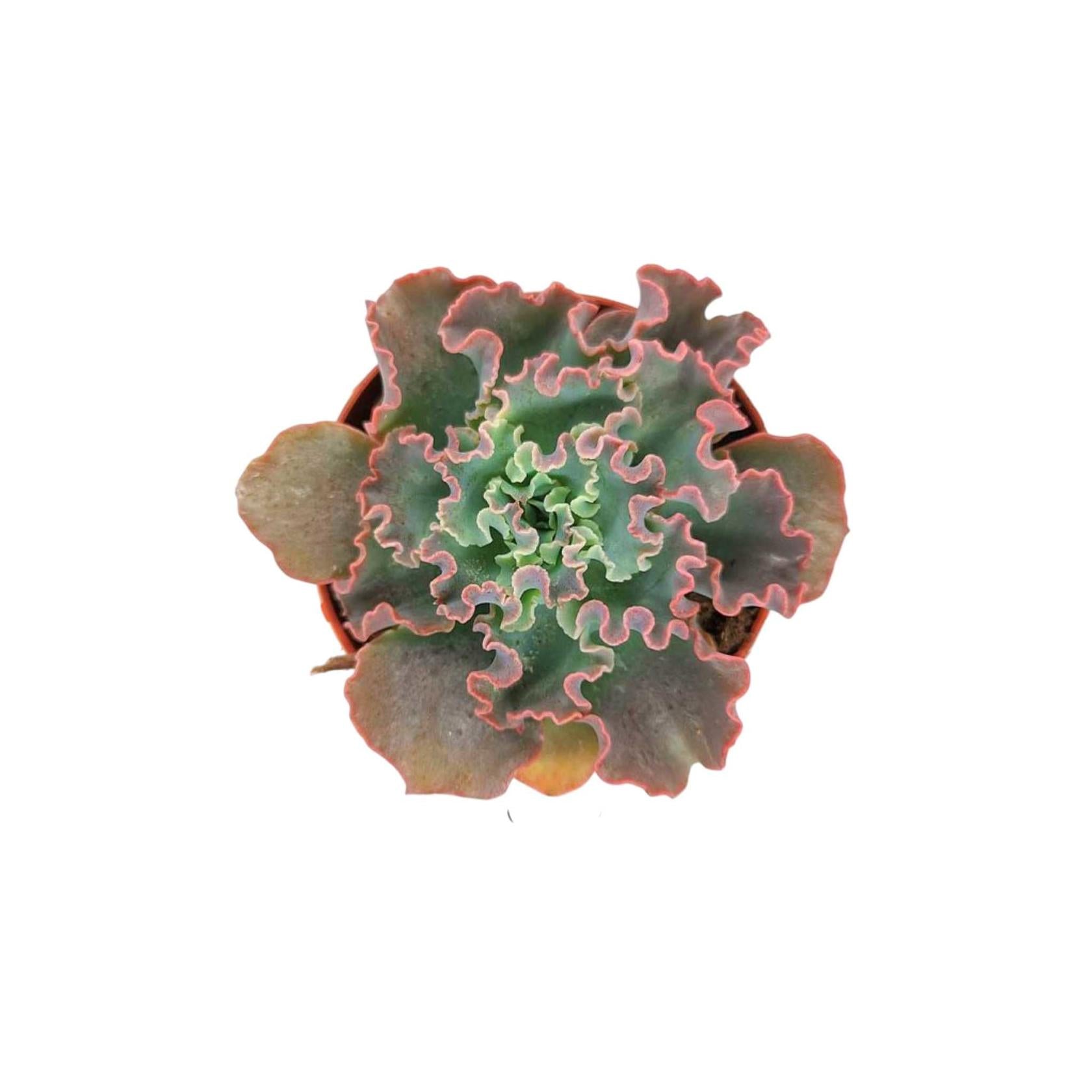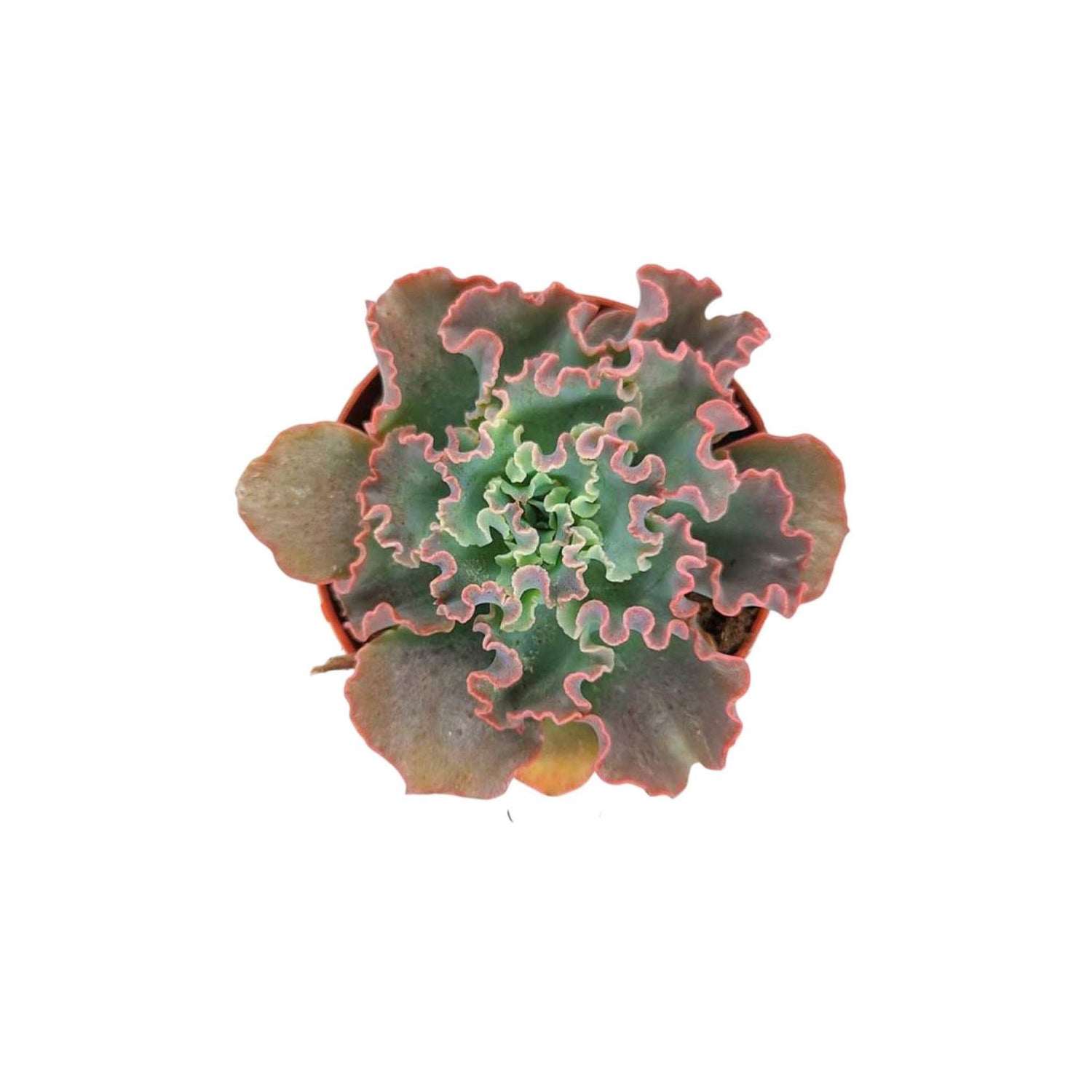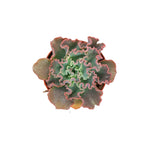
Echeveria Shaviana
$12.29
Unit price perEstimated delivery between 31 October and 02 November.
At Divine Root, we are committed to delivering healthy, high-quality indoor plants to our customers. While we do not accept returns due to the perishable nature of live plants, we offer a 30-day plant health guarantee and store credit for qualifying issues. Please read our Refund Policy carefully to understand how we handle concerns regarding plant health, shipping, and order

Echeveria Shaviana Care Guide & Presentation
Pet Safe
Yes
Water Needs
Low
Sunlight
Bright
Hardiness Zones
9-11
Temperature
60°F to 80°F
Suitable Space
Windowsills, desktops
Humidity
Low
Plant Class
Echeveria
Plant Type
Succulent
Plant Characteristics
Ruffled rosette
Genus
Echeveria
Fertilizing
Monthly
Re-potting
1-2 Years
Cleaning
As needed
Propagation
Leaf cuttings, offsets
Echeveria Shaviana: Overview
The Echeveria Shaviana (Echeveria shaviana), also known as Mexican Hens or Pink Frills, is a member of the Crassulaceae family native to the rocky cliffs of Mexico. Renowned for its ruffled, spoon-shaped leaves in soft lavender-gray with delicate pink edges, this succulent exudes a delicate, lace-like elegance. Thriving in bright light and well-draining soil, it’s a low-maintenance perennial perfect for indoor containers, rock gardens, or drought-tolerant landscapes. Hardy in zones 9-11, its compact rosettes and seasonal pink blooms make it a favorite among succulent collectors.
Symbolizing grace and tranquility, Echeveria Shaviana is non-toxic to pets and humans, ensuring safe placement in any home.
Echeveria Shaviana: Benefits
- Adds soft, sculptural beauty with its crinkled, pastel-hued foliage
- Thrives in dry conditions and is ideal for xeriscaping or water-wise gardens
- Purifies indoor air by absorbing pollutants like benzene and formaldehyde
- Compact size (6-8 inches tall) fits windowsills, desks, or fairy gardens
- Low-maintenance and drought-tolerant, and perfect for busy plant lovers
- Produces pink, bell-shaped flowers on tall stalks in summer for seasonal charm
- Safe for homes with pets or children
Echeveria Shaviana Care Guide
This hardy succulent is easy to grow but requires specific care to maintain its ruffled texture and subtle coloration. Follow these guidelines for thriving plants.
Watering
- Water only when the soil is completely dry and every 2-3 weeks in summer, sparingly in winter.
- Use the soak-and-dry method: water deeply at the base, avoiding the leaves to prevent rot.
- Ensure pots have drainage holes to avoid waterlogging.
Light
- Requires 6-8 hours of bright, indirect sunlight daily to enhance pink edges.
- Indoors, place near south or west-facing windows; use sheer curtains to filter intense sun.
- Too little light causes stretching (etiolation) and loss of ruffled texture.
Temperature
- Prefers 60-80℉ (16-27℃) protect from frost and temperatures below 40℉ (4℃).
- Low humidity is ideal to avoid damp environments to prevent fungal issues.
Common Problems
- Root rot: Caused by overwatering, use gritty, well-draining soil.
- Mealybugs: Treat with neem oil or 70% isopropyl alcohol.
- Faded color: Increase light exposure to restore pink edges.
- Leaf curling: Often due to underwatering or low humidity.
Best Locations & Uses
- Sunlit windowsills, offices, or bright patios with filtered light
- Outdoor rock gardens, succulent beds, or xeriscapes
- Textural accent in terrariums or cottage-themed arrangements
- Wedding décor, table centerpieces, or calming office accents
- Pairs with sedum, graptoveria, or blue echeverias for contrast
- Ideal for small spaces, balconies, or pet-friendly homes


